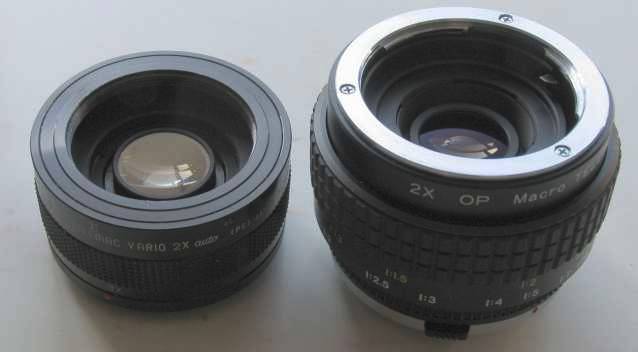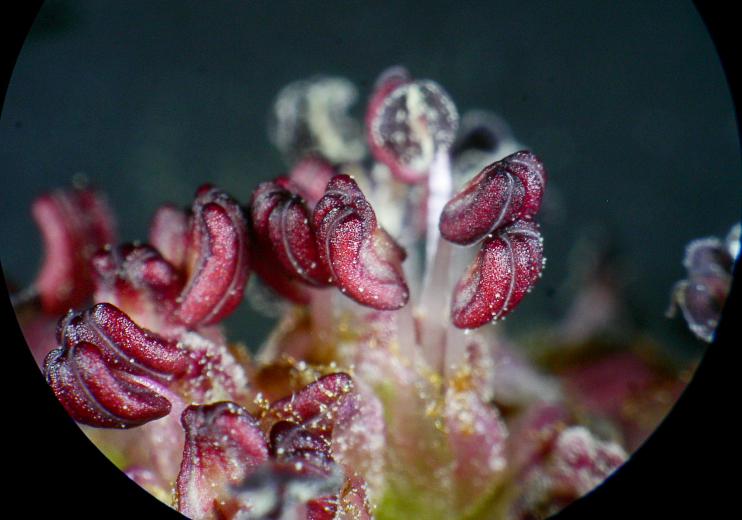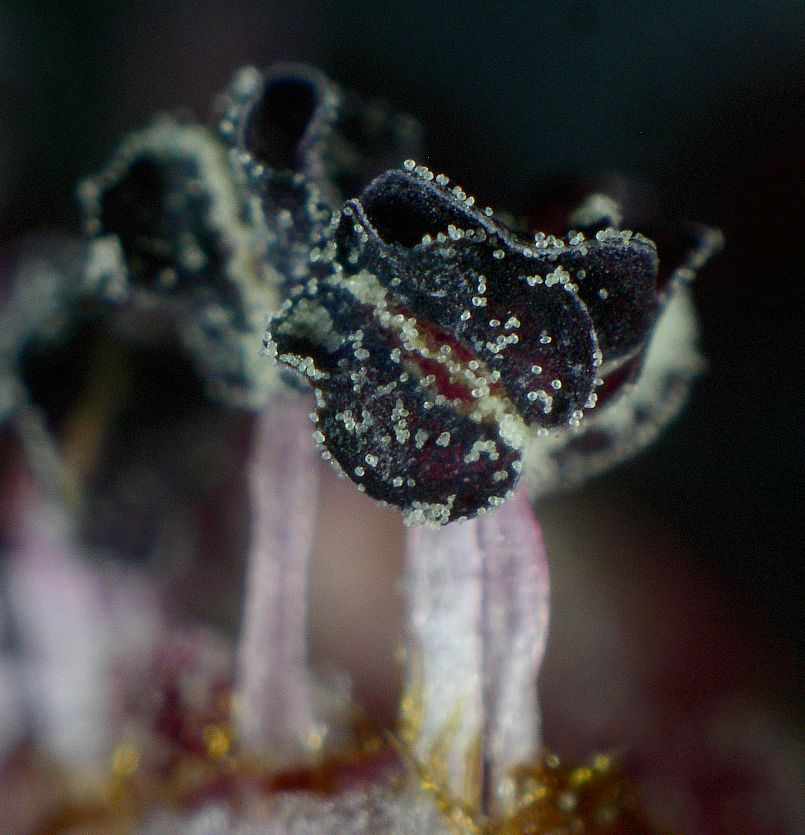|
The Poorman's Photomacroscope (pt5) Finally : Some Loose Ends By Paul James |
Variable Power Converters
A considerable improvement to the convenience of use of the DIY photomacroscope can be brought about by the use of the type of converter which has an adjustable internal optic. They usually have legends of the style ....."x2-x3" or the equivalent embossed on their barrels. Within these units the optical elements can be conveniently moved along the optical axis by means of a helicoid sleeve..... similar in fact to the normal focussing mechanism of a camera lens. When coupled beneath the camera lens objective, they have the ability of extending the range of amplification from a given objective. which can be varied by a twist of its barrel : though when doing so the image focus shifts necessitating an alteration of the specimens' elevation, unlike a true constant focus zoom on a stereomicroscope.
This facility is also compounded to great effect by virtue of the camera objective's ability to be altered by its own 'focussing' ring. By this means the observer can make swift changes to the magnification level/field diameter by rotating either or both focussing rings of the converter and camera objective. When both optics are furthest apart from each other the image so produced is at its highest amplification, subject to the physical constraints of working distance. The juxtapositioning of both lenses in relation to each other AND to the eyepiece in the finite or infinite system has to be experienced to understand the effects on the image's scale, as it is too complex to describe here. In most instances of employing a variable power converter there will be a need to insert a short extension ring between it and the camera objective in order to prevent the glass in the converter clashing with the camera lens/mount at its highest setting. The actual spacing between these 2 components can be judged by experimentation to suit the observer's preference with their particular setup. And so within the limitations of a stand's focussing range can be found a given spacing between the 2 optics which generates the maximum range of magnification, whether employing the infinity or finite setup.
 |
The image above left shows an excellent example of a variable converter: the "Sigma Telemac Vario x2" in M42 mount form which is extremely useful in varying field diameter as well as providing a delicate way of focussing too. It is perfectly matched to the Zenit 58mm objective throughout its range of adjustment, raising sharp imagery to the very edge of the field in all but the most extreme widefield achromatic eyepieces, and even with these there is little to be concerned about. But I cannot be certain that this Sigma Telemac will be just as effective in maintaining image quality from other camera lenses, though I'd imagine it would if you can find one to suit your camera lens's bayonet fitting.
The other example shown above right is a slightly different proposition....'Teleplus's' macro extender in Olympus fitting effectively works in similar vein, but despite its 7 element optic and much higher value has a less effective amplification range owing to the bulk of its mounting, which eventually extends so much that it rapidly reduces the working distance and is therefore partially self defeating. Within its own compass however it raises high quality imagery with the Olympus 50mm f1.8 camera lens. The images shown below illustrate the basic physical differences between these 2 examples of converter :-
 |
The M42 screw thread system in photography is perfectly suited to this mode of macro observation, as it is not only simple and cheap, but emminently suitable for the DIY'er as the thread can be easily cut on the lathe, and so simplifying the making of an attachment port from the trinocular port to an dSLR camera body using an easily available M42 /bayonet adapter. The only common denominator between the vast range of camera objectives is their filter thread attachment, which they all share, regardless of proprietary couplings of their bayonet or M42 screw thread.
Imagery Generated From The Modified Leitz Metallux
The following images were captured over the trinocular port with an old Minolta F300 5 megapixel digicam. Its zoom lens was advantageously employed to size the image. The photo imaging eyepiece used was a Reichert 30mm WPK x6.3/24 which has a huge Ramsden disc, and therefore ideal for this method of image capture.
 |
|
Wych Elm pollen sacs just prior to bursting open Zenith 58mm/Variable converter (infinity setup + LED lighting) |
 |
| Unsized crop of burst sac with remnants of pollen. Zenith 58mm No converter (infinity setup + LED) |
 |
| Larch's fungal semi mature fruiting bodies. Zenith /variable converter (infinity setup) Tungsten Lighting. |
 |
| As above many weeks layer later showing parasitic invasion. Same setup but with desktop lamp illumination. |
All that remains for me to explore now is whether the expected improvement from a larger sensored dSLR is financially justifiable. That and any other revelation I might chance upon in the meantime will form the core of a further article in due course.
What is in no doubt in my mind, is the utter reliability of the converted Leitz Metallux stand to do the business, and do it extremely well.
| All comments welcome by the author Paul James |